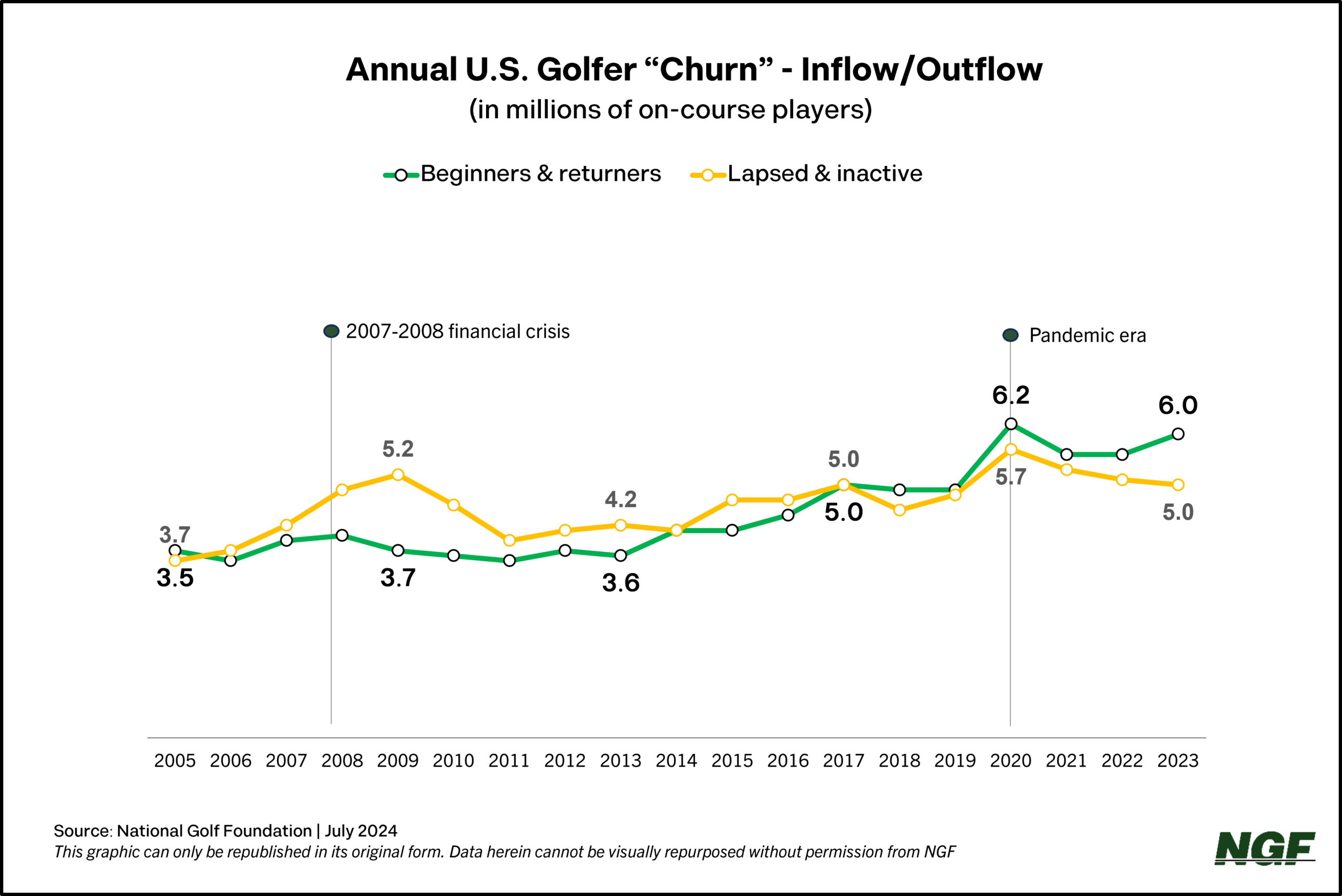The past four years have been historically strong for the U.S. golf industry, with a net gain of more than 2.3 million on-course golfers since 2020. For perspective, consider that only the four biggest cities in the country — New York, Los Angeles, Chicago and Houston — have populations larger than that increase.
But what if we told you that roughly 6 million new people played green grass golf, EACH of the last four years?! The 2023 total of 6 million was comprised of 3.4 million first-timers (played on course for the first time ever) and 2.6 million returning former players (did not play in at least the previous year).This is the clearest evidence that recreational golf does not have a “top of funnel” problem. Not by a longshot. We literally have millions of people trying our game every year who didn’t play during the previous year.
Those who sample our game and don’t stick with it are often called “failed trials” here at the NGF.
With all the positive news about the recreational golf business, this is perhaps golf’s most significant opportunity, or most profound failure, depending on how you look at it. Golf has a very healthy gravity drawing people in, but complacency is our enemy. Making novices feel comfortable in the golf environment is critical. Clearly, not everybody who ventures out to the golf course for a game decides to stay with it. While NGF has reported net gains every year since 2017… that was coming off a lengthy stretch where we often lost more than we gained.
We refer to net changes in participation because golf has a noteworthy annual “churn.” Lack of retention isn’t always due to the game itself or a poor experience. Life changes (like job, relocation, family and finances), health, and mortality have meaningful impact. And there will always be super-occasional players who might tee it up in an outing every few years but never become part of the franchise. Over the past four years, the “inflow” has more than offset golf’s “outflow,” including last year’s net increase of 1 million on-course golfers… the biggest boost in the U.S. in more than two decades.

The departures in more recent years (including, or perhaps excluding, the biggest Covid-related “leak in the bucket” of 5.7 million in 2020) raise questions about missed opportunities and whether we as an industry are doing enough to not only retain newbies but convert them into committed participants.
NGF members can read more on that research here, but currently only about one-in-four beginners becomes a committed golfer – the vital group of participants that’s responsible for around 90% of the industry’s rounds and golf spend.
Increases are one thing. Sustained increases, and less churn, are even more important for the game’s long-term health.



